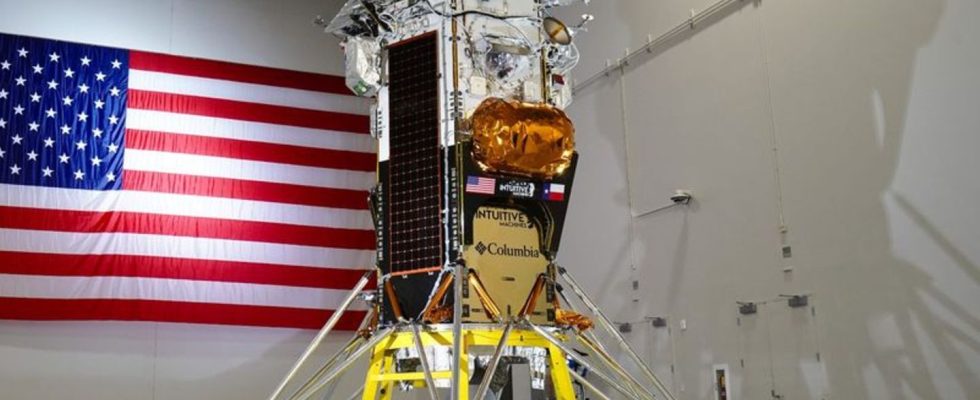Space travel
US company wants to create the first commercial moon landing
The “Nova-C” lander from Intuitive Machines. photo
© Nick Rios/Intuitive Machines/dpa
Five countries have made it to the moon, including the USA with people – but a commercial landing on the Earth’s satellite has not yet worked. Now a US company is making the next attempt.
After numerous failed attempts by various companies, a US company wants to be the first commercial one again today (from 11:49 p.m. CET). Try to land on the moon in space history. If the landing works, it would also be the first – albeit unmanned – US moon landing since the “Apollo” missions more than 50 years ago.
The lander “Nova-C” from the US company Intuitive Machines is expected to touch down gently in the southern region of the Earth’s satellite. He is nicknamed “Odysseus”. The lander is about the size of an old-fashioned British phone booth, has aluminum legs, weighs around 700 kilograms and can carry around 130 kilograms of cargo.
NASA has occupied a large part of it with research equipment and other things, while commercial companies have secured the rest for their projects. The US artist Jeff Koons also sent along 125 miniature sculptures made of stainless steel.
Gather knowledge
“Nova-C” was launched a week ago from the Cape Canaveral spaceport in the US state of Florida. The means of transport was a “Falcon 9” rocket from technology billionaire Elon Musk’s space company SpaceX. After the launch, Intuitive Machines regularly provided information about the “excellent” condition of “Odysseus” and published images.
The mission is part of NASA’s “CLPS” (Commercial Lunar Payload Services) program. With this program, the US space agency wants to collect as much knowledge as possible on its own way back to the moon comparatively cheaply and efficiently by awarding contracts for lunar landings to private companies and working with them. A total of around 2.6 billion dollars (around 2.4 billion euros) is budgeted for the “CLPS” program by 2028.
Intuitive Machines received around $77 million for the “Nova-C” mission. The company, based in Houston, Texas, was founded in 2013 by, among others, US-Iranian entrepreneur Kam Ghaffarian, who is also behind the company Axiom Space, which just sent astronauts to the ISS space station on a commercial mission.
Moon landings often go wrong
Moon landings are considered to be technically extremely demanding and often go wrong. This year alone, two planned landings have turned out differently than hoped: The US company Astrobotic, based in Pittsburgh, sent off the “Peregrine” capsule in January – also as part of NASA’s “CLPS” program.
Shortly after takeoff there were problems due to a malfunction in the propulsion system. The engineers were able to temporarily stabilize the capsule, but the goal of landing on the moon had to be abandoned. A few days later, “Peregrine” burned up in the Earth’s atmosphere.
Shortly afterwards, the lander “SLIM” (Smart Lander for Investigating Moon) from the Japanese space agency Jaxa touched down gently on the moon, but initially had problems with the energy supply. “SLIM” was only able to go into operation after a power outage that lasted for days. This makes Japan the fifth country – after the USA, Russia, China and India – to successfully land on the moon unmanned. Last April, a Japanese company with a similar mission failed.

